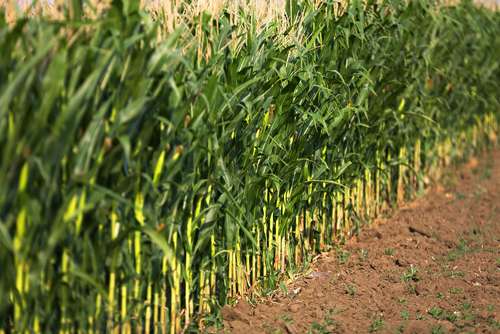New Plant Stem Cell Discovery Points to Increased Yields
 Researchers from Cold Spring Harbor Laboratory have discovered a new growth-regulating pathway in plants that has eluded scientists for years. In addition, by tweaking this new pathway the scientists have found a way to gently upregulate stem cell growth, boosting maize’s yield by up to 50 percent, which could have important real-world applications.
Researchers from Cold Spring Harbor Laboratory have discovered a new growth-regulating pathway in plants that has eluded scientists for years. In addition, by tweaking this new pathway the scientists have found a way to gently upregulate stem cell growth, boosting maize’s yield by up to 50 percent, which could have important real-world applications.
While the team reported a number of findings in the new Nature Genetics paper, Professor David Jackson at Cold Spring Harbor Laboratory, told Bioscience Technology that for him, as a basic biologist, the most exciting thing was that they found a new way in which stem cells are controlled in plants.
Previous research had suggested that this pathway was present, but no one had actually found the molecule to perform that function. There were experiments done several years ago that suggested there is a signal that comes from the developed part of the plant, from the leaves, that goes to the stem cells to control them, however Jackson’s work is the first discovery of that signal.
Usually in Jackson’s line of work the moment of discovery comes when the gene is identified, mainly through use of a mutant and DNA cloning, because that is typically when it’s revealed what the gene is doing in the molecular sense. In this case, however, Jackson said that the “ah hah” moment came much later since the gene itself was related to many other genes that been found before and in itself was not that exciting. Instead it was when the team found out where the gene was functioning in the plant, which was very different from previous work.
“It was functioning below the region of the stem cells rather than above, which is where all the other recent research had been focusing,” Jackson said.
Another moment in which things clicked into place was when Jackson contacted a colleague who he knew was doing computational modelling work in plants and shared the results of the team’s experiments. The colleague was amazed because he had been looking for exactly what Jackson had found. Their computational model had predicted the pathway, but the colleague didn’t know what the molecules were. The two groups ended up collaborating and both contributed to the recent paper published May 16 in Nature Genetics.
“That’s why I love science, you make these connections and you find somebody on the other side of the world who is thinking exactly what you’re thinking,” Jackson said.
In his own career Jackson was heavily influenced by the post doc work he did at Berkeley, where he learned about plant development and stem cells. Jackson explained that there are people all around the world working on stem cells and plants and that “no one is working in a vacuum.”
“The way we make breakthroughs is we take all that information together from many labs and then try, whenever we have a new result, we interpret it in the framework of what’s known for all of those other groups,” he said.
The team found two major players in this new pathway, genes FEA3 and FCP1. Although FCP1 was described a decade ago, until now researchers had not been able to ascribe a function to it. FEA3 is a receptor, which a protein is sitting on the surface of the cell looking for signals, while FCP1 is the actual signal. It is a small peptide that the team believes binds to the FEA3 receptor.
Working with maize plants, the team studied the genes in this new stem cell pathway, and Jackson said they were able to find variants of those genes, also known as alleles, and those alleles can lead to increased yield. When FEA3 is mutated the scientists were able to find a way to gently upregulate stem cell growth so the maize produces more stem cells, thereby increasing yield by up to 50 percent.
They also showed it the signaling pathway functions in a second plant called Arabidopsis, which is used as model system for plant studies, similar to the way fruit flies are model systems in medical research. Jackson said that maize and Arabidopsis are very divergent, so it suggests that the pathway is going to be in all plants.
This could be important for agriculture and feeding the world’s growing population. “There’s great concern that we won’t be able to feed everybody in the coming years,” Jackson said, noting that the population is supposed to increase by another 50 percent in the next few decades and that the amount of land available for productivity is limited.
“I think that by producing higher yields, we can not only guarantee to feed the growing population, but also to hopefully reduce agriculture inputs, so basically improve sustainability, and be required to use less land for agriculture,” he said.
Of course, Jackson noted, there is always a caution that what was found to be true in the lab, may not translate to an agriculture setting. How the plants are grown in the lab differs from how a farmer grows crops in the field, so although the team saw a large increase in yield in their studies, there’s the potential that it may not turn out the same in real-world settings.
Up next Jackson will focus on continuing to discover new factors in this pathway. “Although we found two major players in the pathway there are many pieces that are missing,” he said. “So we’ll continue to use genetics and biochemistry to try to find additional players, and moving forward as we find these new players then there are new candidates, potentially, for breeders to use to improve crops.”




